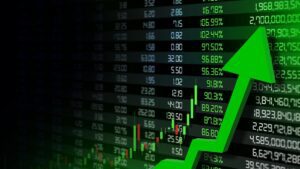Base metals are poised for continued strength, with bullish momentum anticipated across copper, zinc, and aluminum in the medium term, as per a report by Motilal Oswal. This outlook is bolstered by a convergence of tightening inventories, rising demand driven by electrification, and supply disruptions in key producing nations, supporting a constructive forecast for the remainder of FY26.
The report emphasizes a strong long-term outlook for copper, driven by structural shifts in the global economy toward decarbonization, electrification, and digitalization, while also acknowledging persistent disruption risks. Domestic copper prices have surged approximately 27 percent year-to-date, in part due to the U.S. implementing tariffs on copper imports, which reverberated through global markets.
Increasing electric vehicle (EV) sales and escalating copper utilization in electrification and the broader energy transition are significant factors propelling demand. Each electric vehicle requires between 25 and 50 kilograms of copper, compared to 8 to 12 kilograms used in conventional vehicles. Demand for EVs is projected to double to 2.2 million tonnes by 2030, from 1.2 million tonnes in 2025.
Zinc prices on the London Metal Exchange (LME) surpassed $3,000 per tonne in September 2025, reflecting a nearly 9 percent rise year-to-date. This increase is attributed to dwindling inventories coupled with a weaker U.S. dollar. Expectations of production cuts in China have additionally fueled market sentiments, despite uneven broader demand trends.
Aluminum prices on the LME reached a six-month high, exceeding $2,700, largely due to optimism following a 50-basis-point rate cut by the U.S. Federal Reserve, which has elevated overall commodity prices. This rally is further supported by China hitting its production cap of 45 million tonnes. LME aluminum inventories have decreased by 50 percent from peaks observed in June 2024, while inventories on the Shanghai Futures Exchange (SHFE) are down approximately 53 percent.
China’s aluminum imports surged by 40 percent year-on-year, amounting to 317,549 tonnes in 2025, largely facilitated by increased shipments from Russia, Indonesia, and India. Nevertheless, concerns linger as China’s industrial production experienced a dip to 5.2 percent, and fixed asset investments rose merely 0.5 percent year-on-year, signaling ongoing economic weakness.
The report suggests that while there may be continued optimism within metals markets to support aluminum, a combination of factors will likely keep prices within a specific range in the short term.
Published on October 11, 2025.










